If you own a home in New West, you should have received your annual tax bill in the mail in recent weeks. If your assessment went up by the city-wide average of 9.03%, then your tax bill went up over last year by 5.28%. If your assessment went up by more than 9.03%, then your tax bill went up more. Conversely, if your assessment went up by less than 3.7%, or if it went down, then your tax bill this year is lower than it was last year. I tried to show how this works in this blog post from a couple of years ago (with the numbers from a couple of years ago, mind you).
It seems an appropriate time for me to update some of my older posts comparing New West tax rates to others around the region. I’ve done this a few times in a few different ways for several years on this blog (here, here, and here, for example), and no matter what type of analysis you do, it is clear that some local pundits continue to perpetuate terminological inexactitudes when they claim that New Westminster has the highest taxes in BC, or Canada.
Recognizing my own suspicion of bias, all of the data below comes from the BC Government reports that annually compare tax rates and burdens across all local governments, and have been doing so for a while. Of course, this data is from 2018 (Cities are only now submitting 2019 budget numbers to them), but this is the best source to compare numbers across the province. You can read them all here and make your own comparisons if you don’t like my ham-fisted Excel skills.
I am going to reiterate a point I have made before: there are many ways to compare taxes between jurisdictions. Vancouver and Surrey collect more tax overall than New West, because they are much larger. West Vancouver has lower mil rates because their average house price is much higher, Creston has a much higher mil rate because its average house value is much lower. Even the use of “typical house value” to compare taxes is biased, because some cities like New West have more people living in rental and condo buildings than some others, so a “typical house” is much larger and more expensive than the median or average household occupies. So to answer the primary question: do New Westminsterites pay more municipal taxes than residents of other municipalities, I think the fairest comparison is taxes collected per capita:
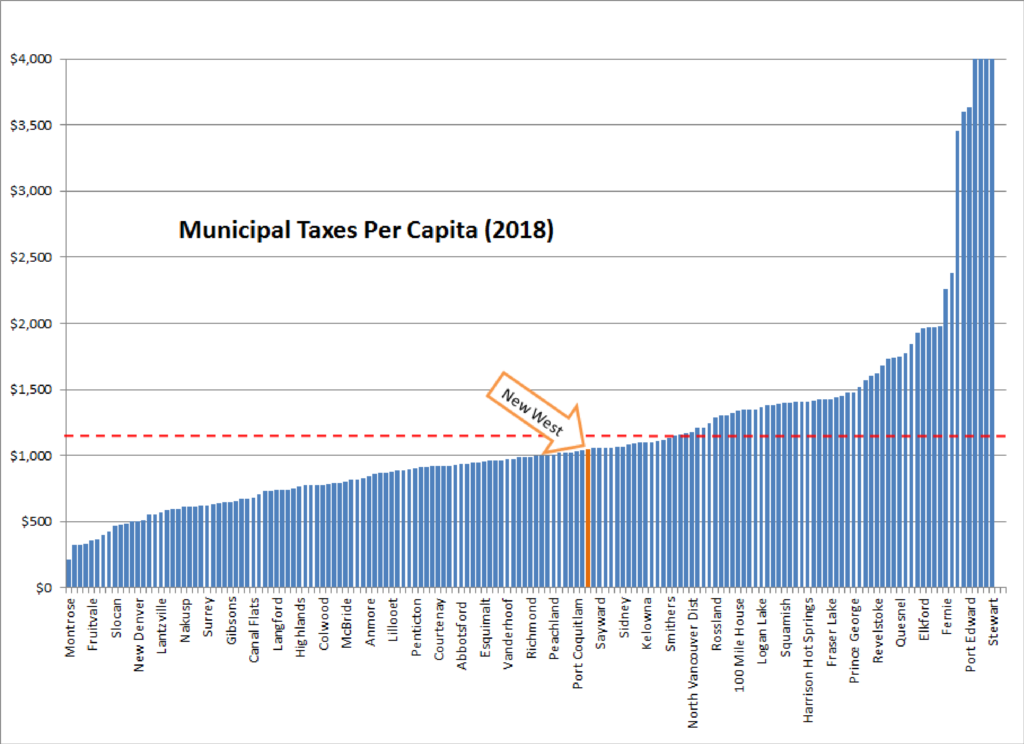
Of the 161 Municipalities in BC, ranked from highest taxes to lowest, New Westminster (orange bar above) is ranked #71, between Parksville (#70) and Saanich (#72). In 2018 we collected $77.7 Million in taxes from just under 74,000 people, making our per capita tax rate $1,051. Province-wide, $4.76 Billion in municipal taxes was collected from 4.3 Million people, making the province-wide average about $1,150 (red dashed line above). So New Westminster residents paid $100 less per year, almost 10% less, than the average resident of BC. Our tax increase in 2019 will eat into this gap, pushing us up by about $50, but at the same time, almost every other Municipality in the province increased their taxes at a rate between 2 and 7%, so our position will not shift substantially.
Naturally, there are massive differences across the province on the proportion of taxes paid by industry and businesses, and the level of services provided by the Municipality. The Lower Mainland is a bit different than the rest of the province in the level of services we supply and the cost of delivering those services, so it may be fairer to only compare New West to our Metro Vancouver cohort:

New Westminster ranks 13th out of 21 GVRD municipalities in taxes collected per capita. The GVRD Municipalities collect about $2.6 Billion in Municipal taxes from 2.56 Million people, for an average of $1019 per person (the red dashed line). New Westminster collects slightly more (3% more) than this average. This has changed over the last couple of years for two main reasons: New Westminster’s Capital Levy we are using to fund our aggressive capital renewal plan (lead by the replacement of the Canada Games Pool) and the regional trend where there is a much higher rate of population growth in the relatively low-tax municipalities of Surrey and Maple Ridge compared to slower growth in Vancouver and (especially) the North Shore. We can talk about correlation/causation here, because it might not be what you think…
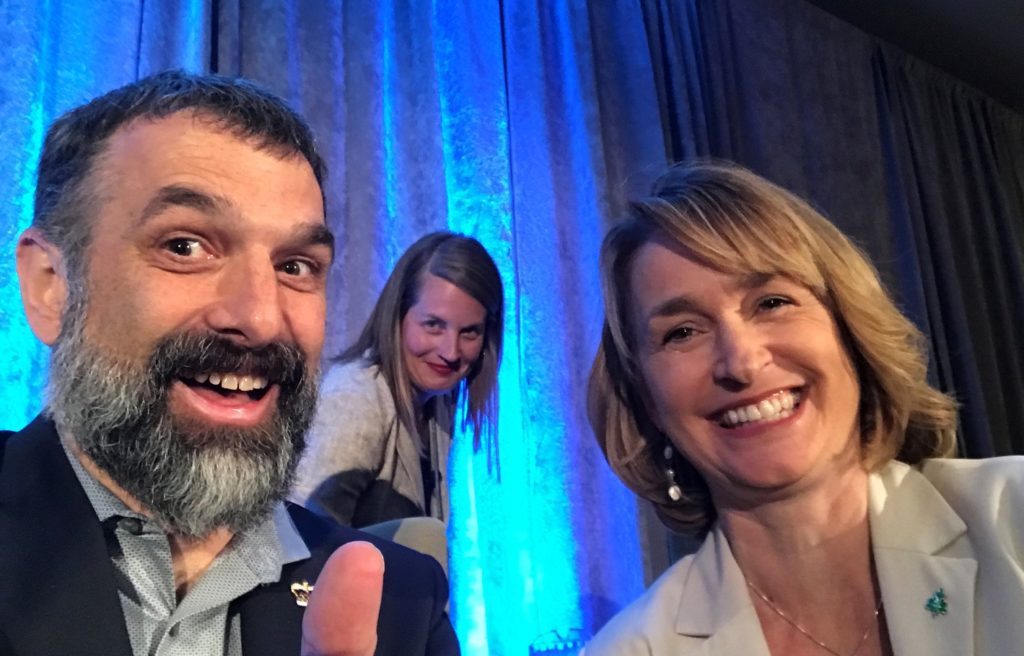
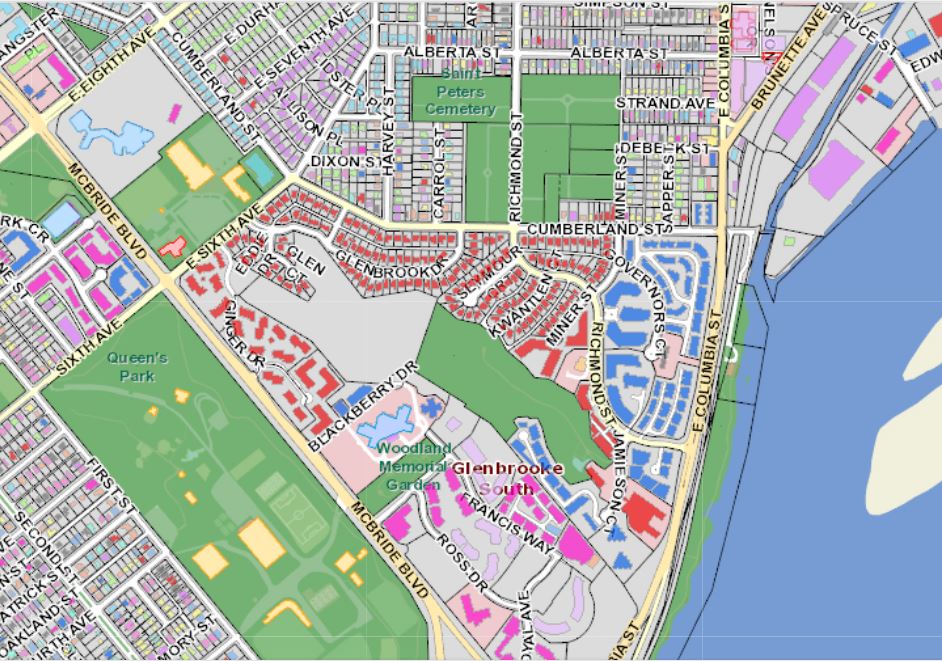
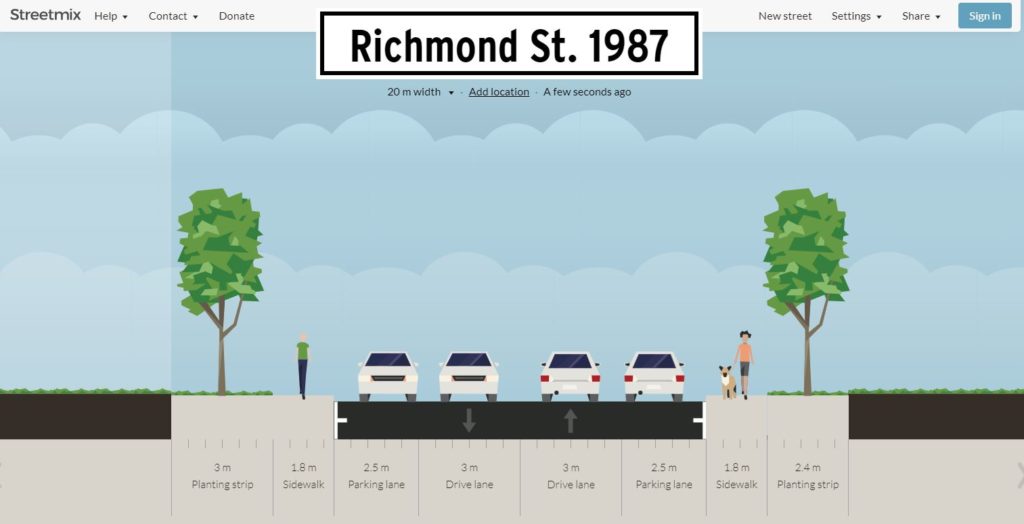
 But that is just a representative cross section. There is another issue that makes the pedestrian experience even more uncomfortable. If you look at the intersection of Richmond and Miner, where staff were asked to evaluate placing a crosswalk, you see the corners are rounded off to facilitate higher turning speeds:
But that is just a representative cross section. There is another issue that makes the pedestrian experience even more uncomfortable. If you look at the intersection of Richmond and Miner, where staff were asked to evaluate placing a crosswalk, you see the corners are rounded off to facilitate higher turning speeds: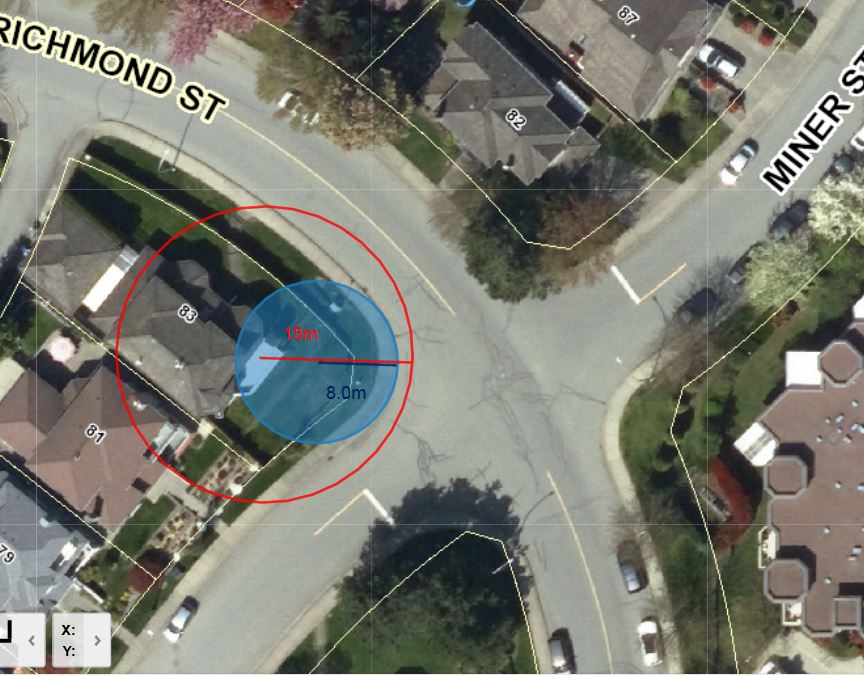 The technical term for this shape is “Corner Radius”. In this diagram you can see the curb follows a curve with a radius (blue) of about 8m, and the effective turning radius (tracing the track a vehicle would actually use for a right turn) is closer to 15m. By modern standards, this is a crazy wide corner, more suited for a race track than an urban area. Reading up on
The technical term for this shape is “Corner Radius”. In this diagram you can see the curb follows a curve with a radius (blue) of about 8m, and the effective turning radius (tracing the track a vehicle would actually use for a right turn) is closer to 15m. By modern standards, this is a crazy wide corner, more suited for a race track than an urban area. Reading up on 
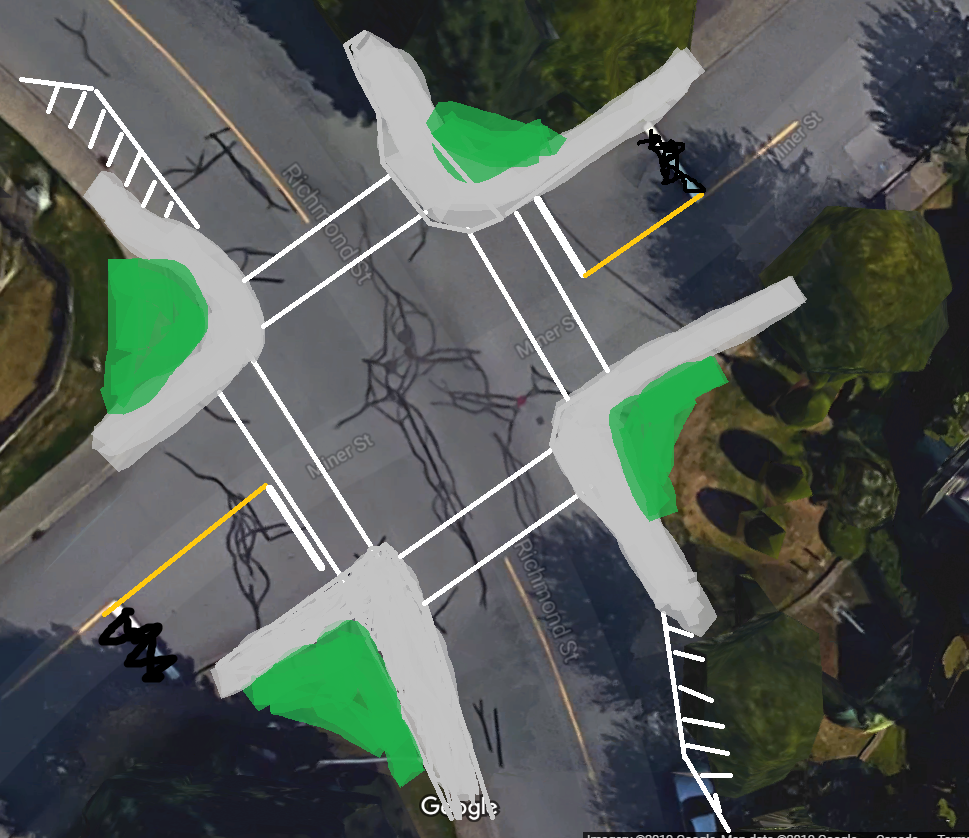

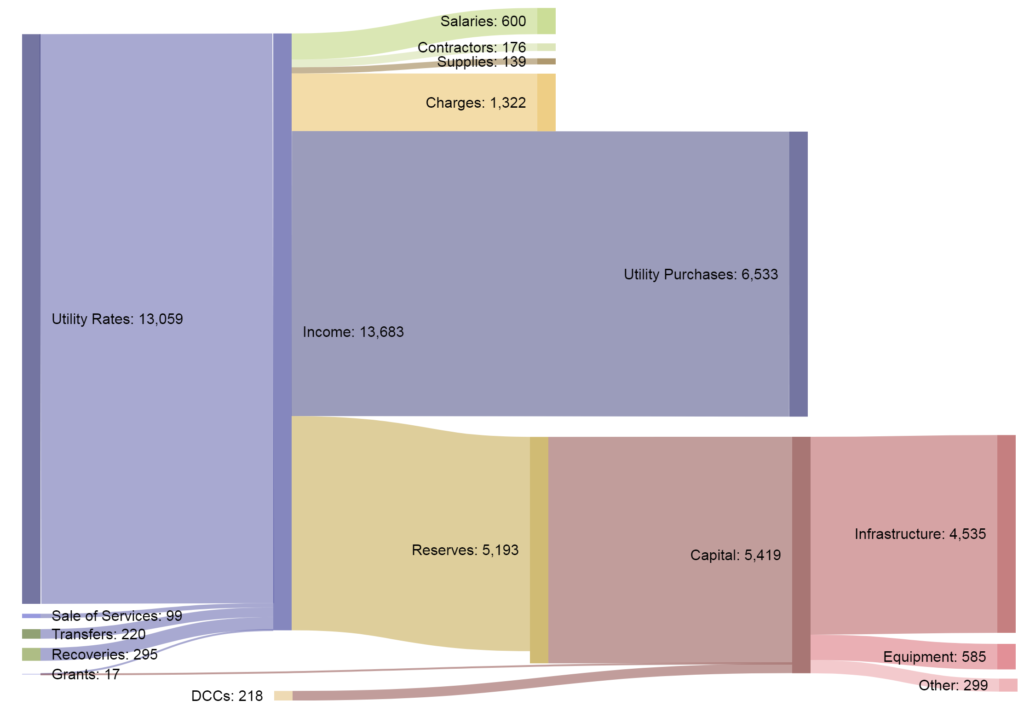
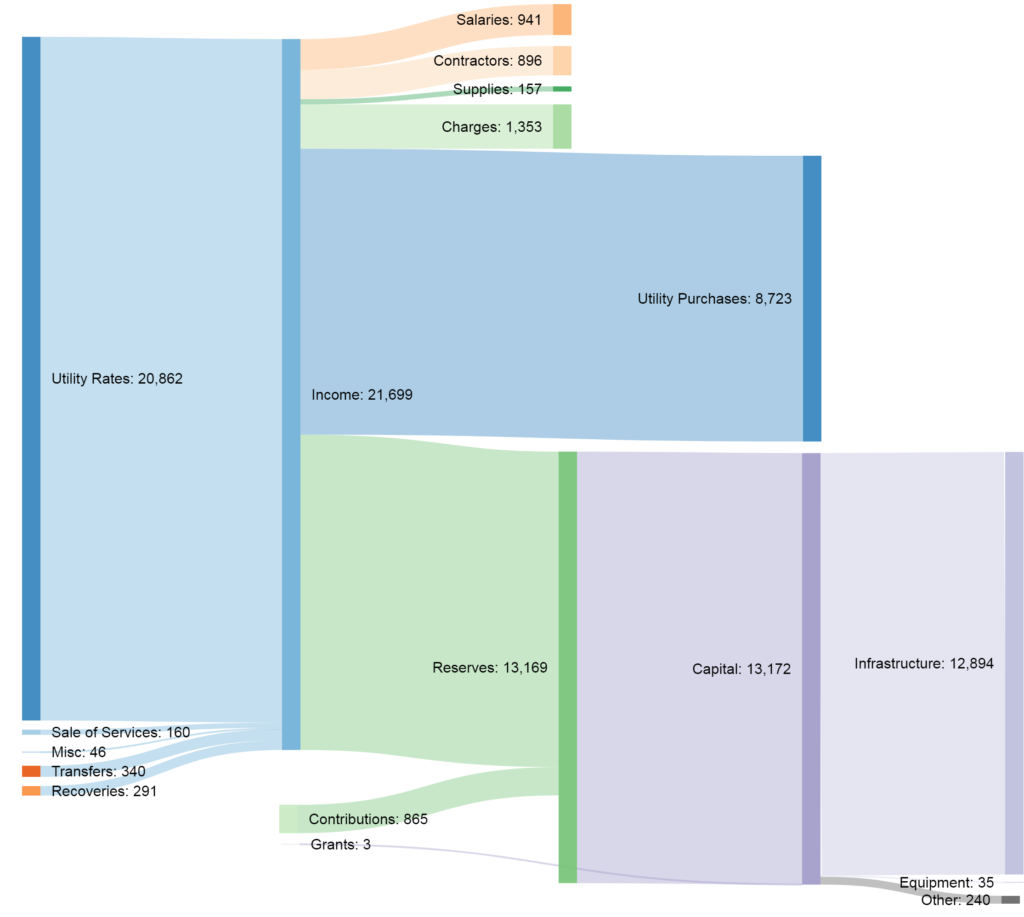 Immediately, you will notice we are spending much more money (proportionally) on infrastructure here than in the water utility. This is largely due to the ongoing sewer separation work that New Westminster has to deal with. You can see it is almost all spent on actual infrastructure ($13 Million!). You will note also that the gap between what we are putting into reserves and taking out is large – about $2.7 Million in 2019. We are also expected to receive another $865K in grants to help pay close that gap. Again, more on this later.
Immediately, you will notice we are spending much more money (proportionally) on infrastructure here than in the water utility. This is largely due to the ongoing sewer separation work that New Westminster has to deal with. You can see it is almost all spent on actual infrastructure ($13 Million!). You will note also that the gap between what we are putting into reserves and taking out is large – about $2.7 Million in 2019. We are also expected to receive another $865K in grants to help pay close that gap. Again, more on this later.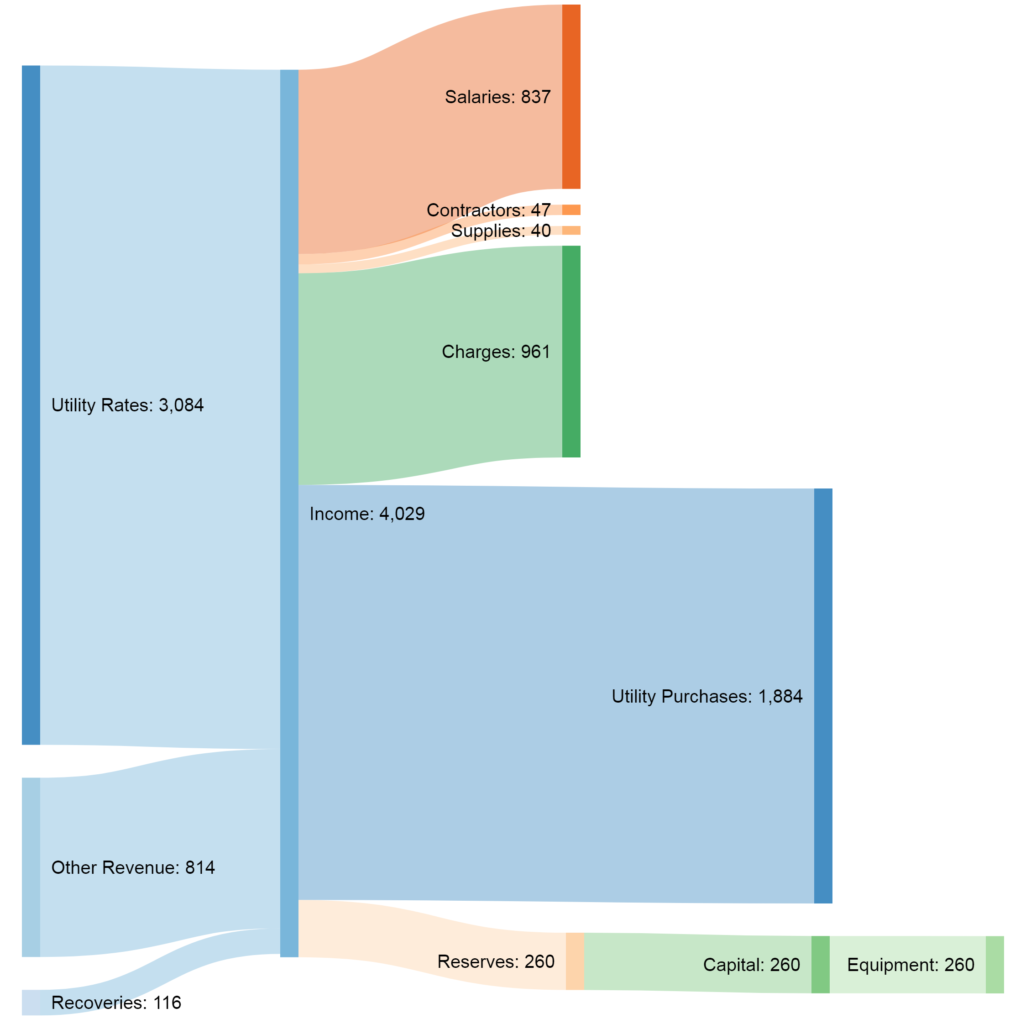 Two things stand out here: the capital budget is much smaller (it is all equipment), and both salaries and Charges is much bigger. This has to do with the nature of the work, collecting garbage requires people, and I suspect the largest “charges” expense is fuel to keep the garbage trucks rolling.
Two things stand out here: the capital budget is much smaller (it is all equipment), and both salaries and Charges is much bigger. This has to do with the nature of the work, collecting garbage requires people, and I suspect the largest “charges” expense is fuel to keep the garbage trucks rolling. This graph shows how the main Water Utility cost drivers are going to change over the 5-year plan. The rates we pay to Metro for water going up steadily, capital spending increasing at a lower rate, and the trend for our reserves is moving from a small annual loss (remember the gap in the flow chart above) to an increase, then trending back to even. You can see by the green bars that our reserves are currently just over $4 Million, with the goal of them settling in at just under $10 million.
This graph shows how the main Water Utility cost drivers are going to change over the 5-year plan. The rates we pay to Metro for water going up steadily, capital spending increasing at a lower rate, and the trend for our reserves is moving from a small annual loss (remember the gap in the flow chart above) to an increase, then trending back to even. You can see by the green bars that our reserves are currently just over $4 Million, with the goal of them settling in at just under $10 million.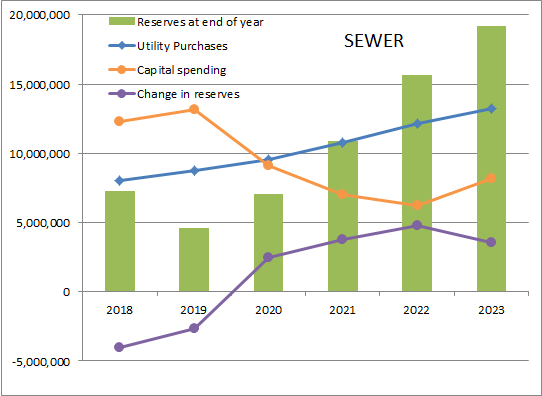 The same graph for the Sewer Utility shows Metro rates steadily increasing, capital spending going down, and our reserve contributions again going from negative to a more sustainable level.
The same graph for the Sewer Utility shows Metro rates steadily increasing, capital spending going down, and our reserve contributions again going from negative to a more sustainable level.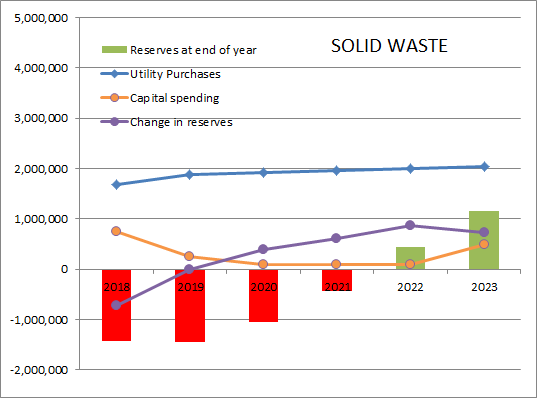 Finally, our Solid Waste accounts show Metro rates only increasing moderately, and our capital spending going down for a few years while the trend for reserves will hopefully go from a deficit position to a small positive reserve.
Finally, our Solid Waste accounts show Metro rates only increasing moderately, and our capital spending going down for a few years while the trend for reserves will hopefully go from a deficit position to a small positive reserve.